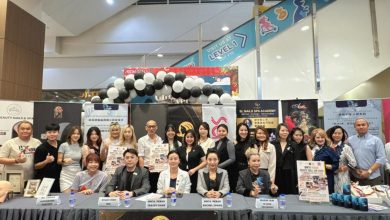

By Ts. Dr Magaret Sivapragasam (Head of the Foundation in Science programme, Quest International University)
“Science is a way of life. Science is a perspective. Science is the process that takes us from confusion to understanding in a manner that’s precise, predictive and reliable – a transformation, for those lucky enough to experience it, that is empowering and emotional.”


Brian Greene, a theoretical physicist, mathematician, and string theorist, could not have put this more eloquently.
At the recent 2020 Virtual National Science Challenge, the Science, Technology and Innovation Minister Khairy Jamaluddin Abu Bakar mentioned that the number of students undertaking Science, Technology, Engineering and Mathematics (STEM) courses has fallen short of the nation’s target.
According to the 2017 Science Outlook Report, the annual tertiary-education enrollment in STEM courses was 40 percent in 2016 from the targeted 60 percent.
STEM is no longer an alien abbreviation to many of us, but without strategic effort it will merely be a descriptor. Malaysia has a bright future in STEM, especially as we enter the Fourth Industrial Revolution (IR 4.0).
The problem we have is this: how can we get more students to be interested in science?
Students shy away from STEM subjects because they think it’s complex–especially when it comes to grasping its fundamental conceptual knowledge.
To strengthen STEM education in Malaysia, the hurdle lies in getting students to fall in love with science and ultimately choosing science classes. The main idea is to showcase the application of science and how it can be applied to everyday learning.
Teachers in primary and secondary schools or even at Foundation levels can work together with universities on activities to develop students’ critical thinking, communication, assessment and inquiry skills through design and invention.
It is imperative that these activities be aligned with the growing demands of the STEM workforce. We would need to develop a curriculum that goes beyond the basics of the current norm.
Through this, an early level interest in STEM could be fostered at a young age, and this in turn would generate a steady supply of students coming into tertiary programmes. This type of pedagogy would prepare primary, secondary and Foundation level students to solve real-world problems and provoke higher order thinking.
At the same time, there has to be an element of inspiration. We must show them role models, so that they know what they want to do is possible, and that it can be achieved.
As a young girl myself, I was fascinated by the works of Jane Goodall, the bravery of Steve Irwin and the wit of Alton Brown. These people made science look so interesting and fun that I could not wait to start pursuing it.
Through science television shows, we encourage students to express their creativity. Allow them to narrate their findings of a certain episode in a non-rigid fashion. It can be through art–a drawing, a poster or even a drama! This allows children to share their knowledge in ways that are personal to them, opening doors to interest in STEM-based careers.
We must also create group-based STEM activities. By encouraging students to work in groups, we inevitably harness skills like productivity, communication, creative thinking and developing solutions.
Allow students the freedom to do research, discover possibilities and generate new ideas for solutions; avoid curbing their imagination. Assigning a mentor to a student allows for an unbiased exchange of support and motivation. This would provide the student adequate coaching, confidence and the encouragement needed for them to pave their way into science-based tertiary education.
If a particular student fails in a given task, help the student understand that failure is the first step to discover a solution. The key is to nurture an environment where all students feel safe to take risks and make mistakes.
The fluidity of science is that it is a constantly evolving field. With new discoveries every day, we are looking at new and upcoming jobs in STEM. Our target now as educators, parents and members of the society is to prepare today’s young minds for the STEM careers of the future.
Daunting? Not so much.
Ts. Dr Magaret Sivapragasam was the first Malaysian named to the International Union of Pure and Applied Chemistry (IUPAC)’s ‘Periodic Table of Younger Chemists’. She was recently listed in Kotex Malaysia’s ‘She Universe’ – a celebration of 100 amazing Malaysian Superwomen.
=============================
Get your local news fast. Download the Ipoh Echo App on your mobile. Available on both Google Playstore and Apple Appstore.


